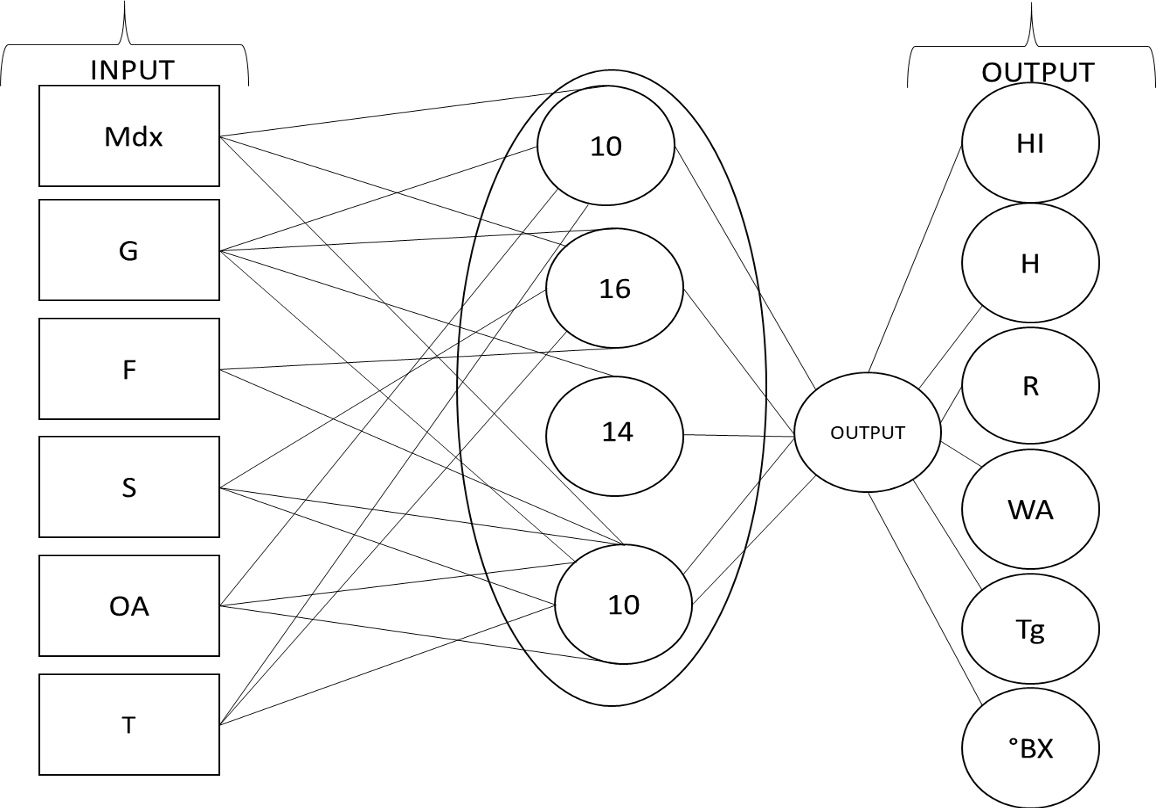 |
|
The production of powder which comes from dehydration sugar-rich foods (SRF), has great economic potential. However, the concentration of the different types of sugar that the SRF consist of varies, this presents problems in the drying process. drying carrying agents are used, nevertheless there isn't an exact dosage for all the SRF. Artificial Neural Networks or (ANN) recently became one of the most efficient empirical methods used to predict and model such systems, especially non-linear systems, Therefore the main objective for this work, was to develop a mathematical model of inverse propagation ANN throughout predicting the spray drying of the SRF, we took 6 input variables Mdx, F, G, S, T and OA and took 6 output as well H, Tg, °BX, HI, WA, R. The selected ANN model was (10-16-14-10) was compared with experimental data done by orthogonal regression which shows that the PMSSRF) model is an efficient model to predict the spray drying of the SRF and therefore the number the amount of experimental testing has been reduced replacing in this way the traditional, trial and error methodologies used, by using the tool development.
Keywords: Spray drying, artificial neural networks (ANN), maltodextrin (Mdx), sugar-rich foods (SRF).
|
|
 |

